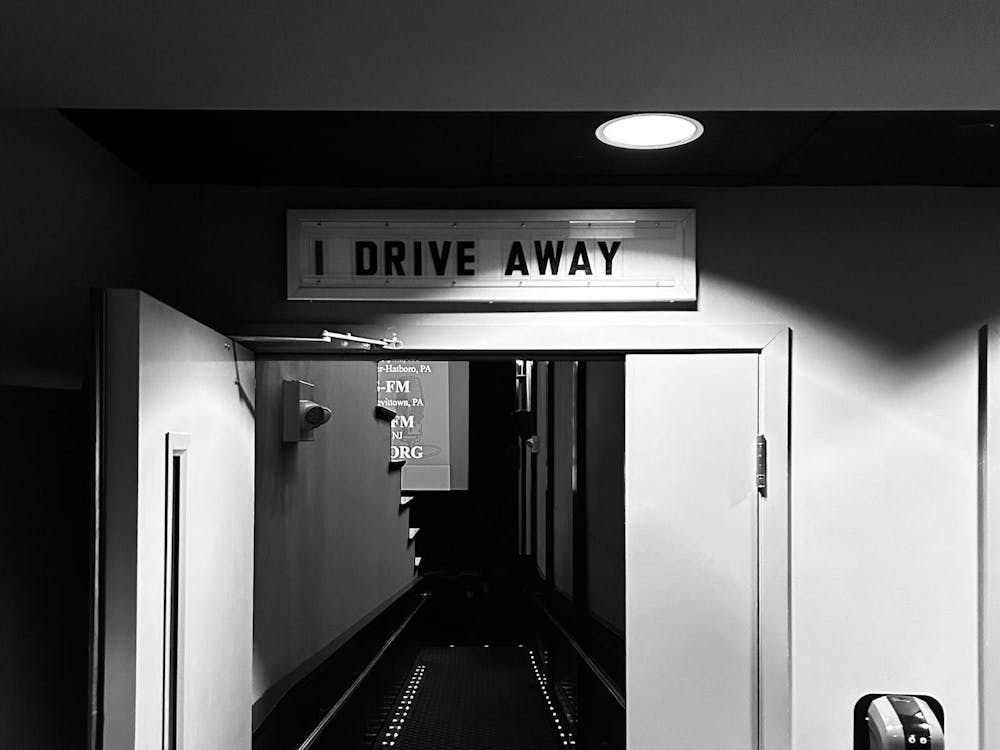The brand-new action comedy “Drive-Away Dolls” opened at the Princeton Garden Theatre on Friday, March 22 as part of the USG Movie Committee’s ongoing early release series. Based on my observations, the film had a notably lower attendance rate than past USG-sponsored movies, potentially because of ongoing midterms or the film’s mixed early reviews.
Directed by Ethan Coen — of the Coen brothers — in his solo debut, the film stars up-and-coming actresses Margaret Qualley and Geraldine Viswanathan as polar-opposite lesbian friends, Jamie and Marian. Set in the late 90s, the duo embarks on a soul-searching road trip from Philadelphia to Tallahassee, Florida. However, a mix-up at the car service leads to them taking the wrong car with mysterious contents inside. The car’s rightful owners — a pair of incompetent criminals — chase the women down to retake what was theirs.
“Drive-Away Dolls” is a film that should work conceptually on script. The Coen brothers are famously lauded for their trademark slapstick humor and gritty violence, as reflected in their classic films such as “Fargo” and “No Country for Old Men.” Furthermore, the lead actresses have proven track records in previous film projects. Not only are Qualley and Viswanathan ideal leads for “Drive-Away Dolls,” but the film also has a remarkable supporting cast: namely, Beanie Feldstein, Pedro Pascal, Colman Domingo, Matt Damon, and — surprise! — Miley Cyrus. Yet, the film just doesn’t seem to deliver.
While Qualley and Viswanathan are experienced with the comedy-drama genre in film, the characters they play are written as one-dimensional and unlikeable individuals. Jamie has a thick, corny Southern accent and a series of hokey catchphrases intended to embody a Texas native. However, the overly-dramatic Texan archetype makes almost every line fall flat. On the other hand, Viswanathan’s Marian is excessively prudish, constantly rolling her eyes at Jamie’s free-spirited antics and having little characterization besides being single. They have so little in common that one wonders how they are even friends in the first place. As a result, the puzzling way the film attempts to develop their relationship feels unsettlingly forced.
Both actresses have proven to be talented and versatile in their own right, so one can’t help but attribute their paper-thin performances to the film’s screenplay. The supporting cast is similarly underused: Feldstein, Pascal, Domingo, and Damon are given characters that don’t give them much room at all to bring groundedness to a film that desperately needs it.
The plot also does little to compensate for the characters’ flaws. As a cross-country caper centered around an unknown MacGuffin, the film should feel intense. However, the scenes contain barely any tension. Besides Domingo, none of the main antagonists bring anything substantial to give the viewer a reason to care about them. Maybe this is why, despite having only an 84-minute runtime, the film felt remarkably long. While the final reveal of the prized MacGuffin that the criminals are after is genuinely surprising, it ultimately left no feeling of narrative satisfaction.
If the film has one saving grace, it is its cinematography. The film glows with the neon-colored dive bar signs and motel entryways, and the scenes taking place in daylight are similarly beautiful. Yet, this visual beauty is diminished by the tacky and awkward editing, carried out by Coen’s collaborator and wife Tricia Cooke. The editing seeks to elevate the humorous tone with wacky scene transitions, but in doing so, kills the little tension the film had possessed.
Ultimately, “Drive-Away Dolls” stands out as a missed opportunity: It makes a genuine attempt to provide meaningful visibility to the lesbian community and is refreshingly raunchy, attempting to breathe new life into the old road trip comedy trope. Yet, the film’s misguided parts ultimately converge into a film that first sputters before stalling out completely.

Edward Rogers is a contributor for The Prospect from Durham, N.C. He can be reached at edward.rogers[at]princeton.edu.









